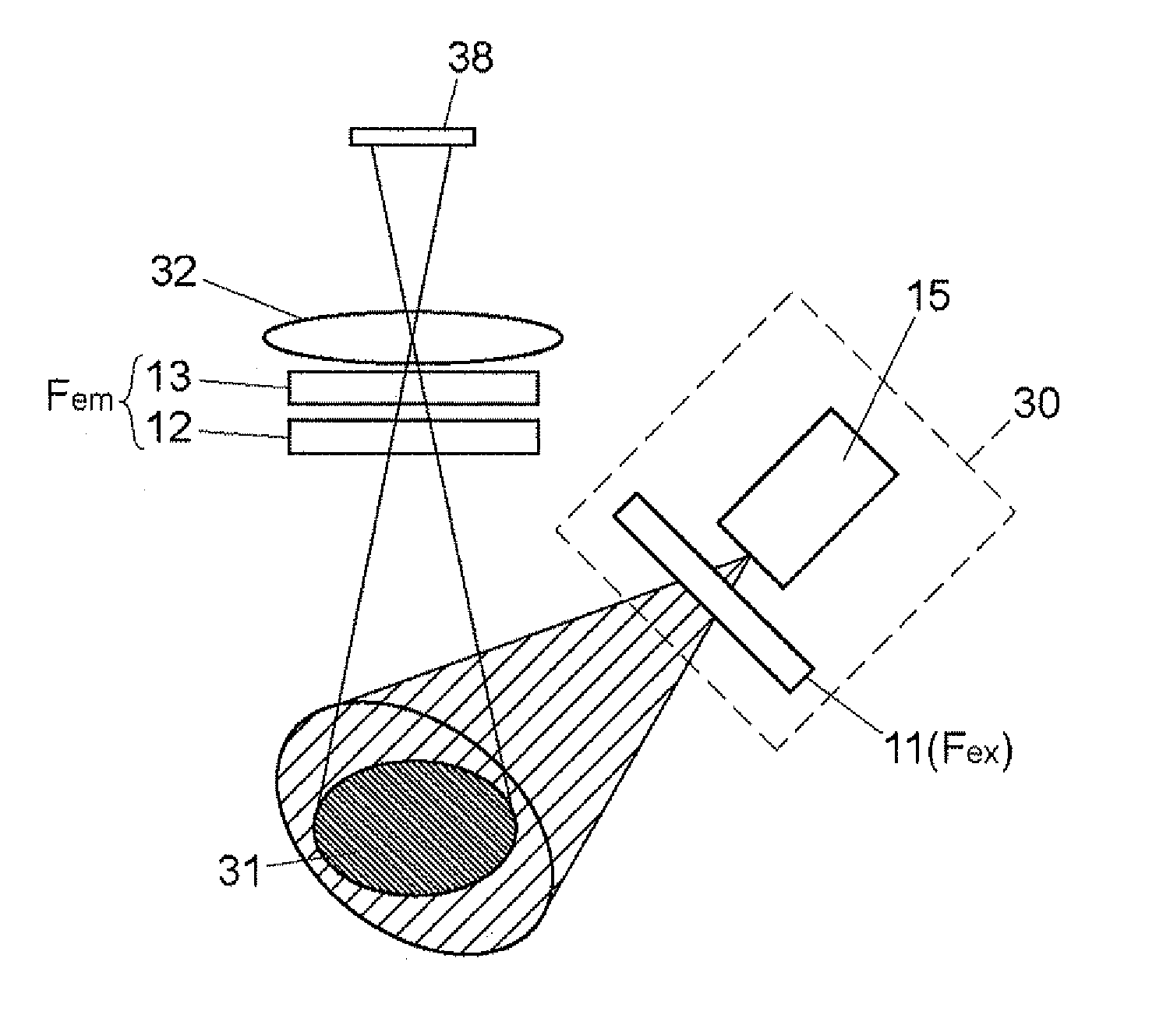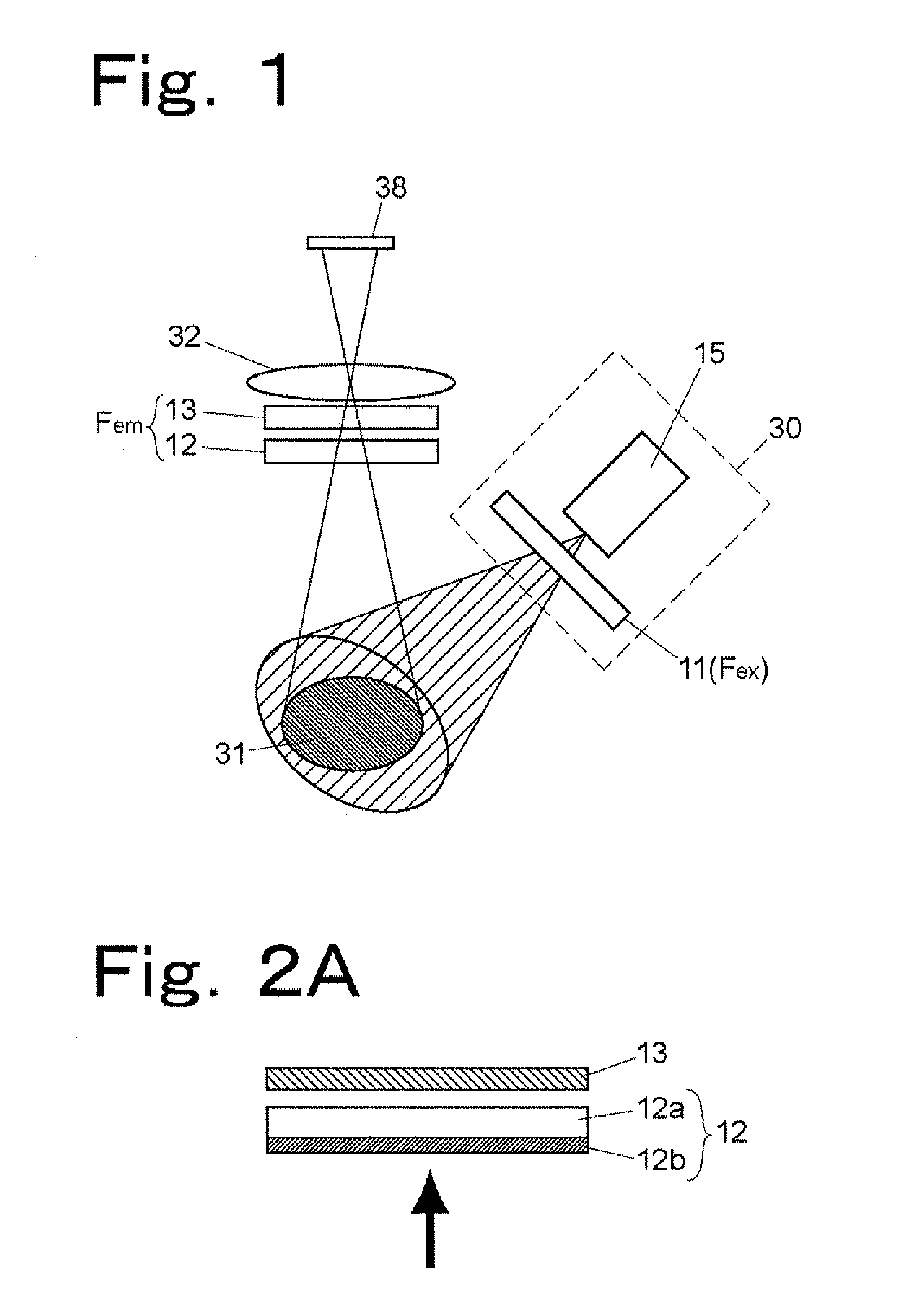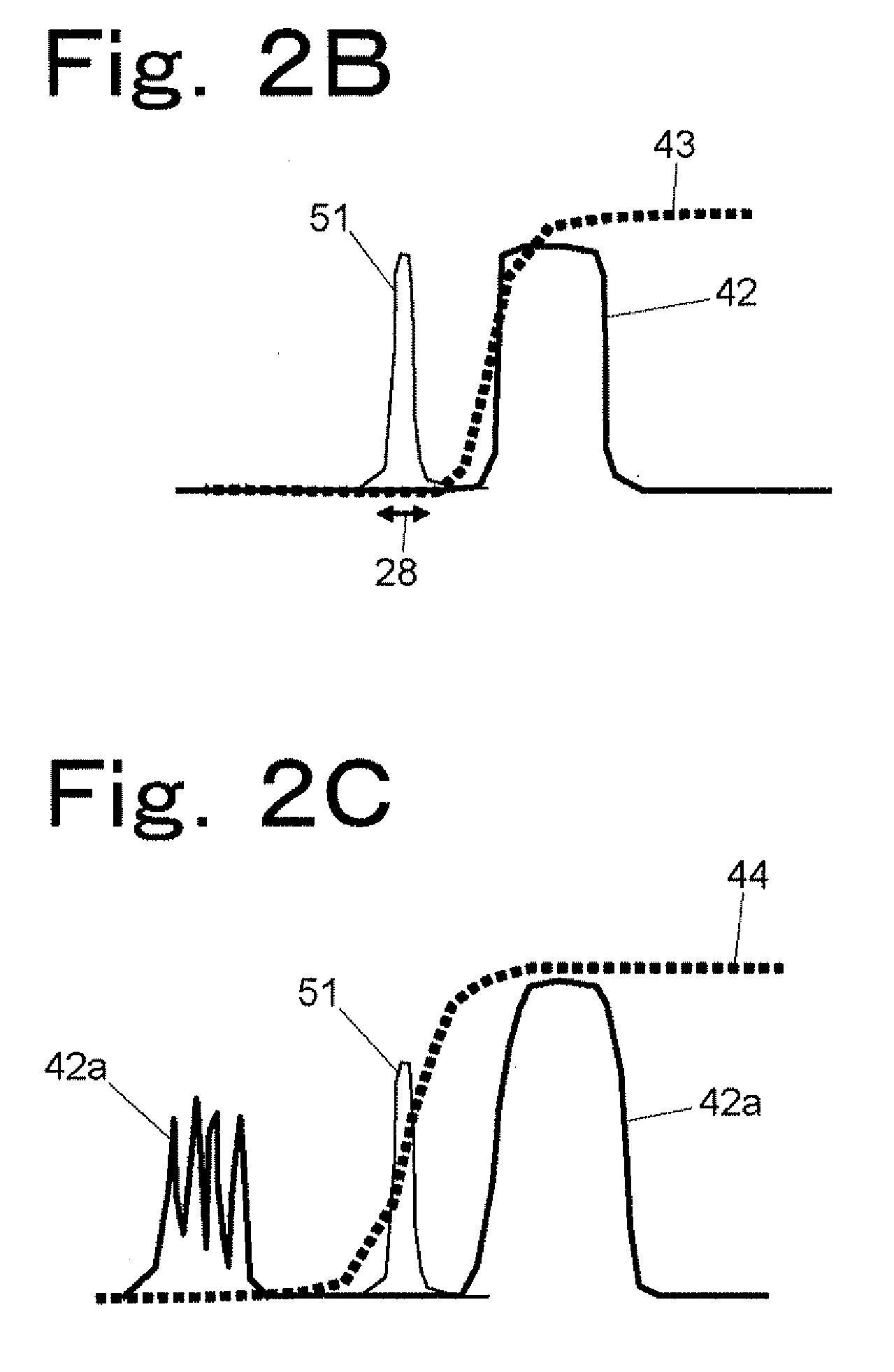Fluorescence Imaging Apparatus and Method for Detecting Fluorescent Image
a fluorescent image and fluorescence imaging technology, applied in the field of optical bioimaging technique using fluorescence detection, can solve the problems of inability to watch the proliferation of cells of a single individual with the passage of time over a long time, the detection limit of fluorescence deterioration, and the inability to vividly image fluorescent components
- Summary
- Abstract
- Description
- Claims
- Application Information
AI Technical Summary
Benefits of technology
Problems solved by technology
Method used
Image
Examples
example 2
With reference to FIG. 4, a description is made about a case where the invention is applied to a micro sample, for which a microscope is used.
The system in this figure is not substantially varied from ordinary fluorescence microscopes. In the fluorescence microscope, an important member for functions of the excitation side and the emission-side is a rectangular beam splitter 61 wherein two prisms are caused to adhere onto each other. Toward two surfaces thereof are arranged an excitation-side filter 11 (Fex) and an emission-side filter section (Fem) paired therewith. This fluorescence microscope is different from conventional fluorescent microscopes in that the emission-side filter section (Fem) is composed of a multi-layered interferece filter 12 and an absorption filter 13. A light source 15 is a single-wavelength light source; however, the light source 15 may be a continuous spectrum light source.
With reference to FIG. 9, a description is made about the blocked wavelength range r...
PUM
| Property | Measurement | Unit |
|---|---|---|
| transmittance | aaaaa | aaaaa |
| transmission wavelength | aaaaa | aaaaa |
| transmission wavelength | aaaaa | aaaaa |
Abstract
Description
Claims
Application Information
 Login to View More
Login to View More - R&D
- Intellectual Property
- Life Sciences
- Materials
- Tech Scout
- Unparalleled Data Quality
- Higher Quality Content
- 60% Fewer Hallucinations
Browse by: Latest US Patents, China's latest patents, Technical Efficacy Thesaurus, Application Domain, Technology Topic, Popular Technical Reports.
© 2025 PatSnap. All rights reserved.Legal|Privacy policy|Modern Slavery Act Transparency Statement|Sitemap|About US| Contact US: help@patsnap.com



